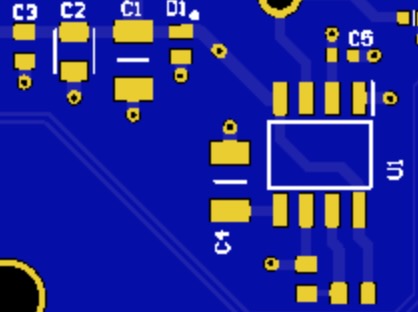Exact Measurement? For Innovation, and Progress
A coherence-based Noise Reduction System, approaches a time-independent reference, or exact standard, for the measurement of time. Download summary of scientific research here.
Thinking Beyond The Limits:
An Action Plan For Sustainable Development

Areas of Application of Coherence Technology Pdf download here: https://www.upgradingtechnology.com/support-files/areasofapplication.pdf
Setting into motion an action plan for sustainable development in a era dominated by complex digital systems can be greatly simplified through a technological innovation. But not just any technological innovation will do. Most innovations still rely on our limited understanding and use of the laws of nature, and these limitations to our understanding of nature have even lead us to the global climatic predicament in which we now find ourselves. Through the refinement of our perception and understanding of how to best use the laws of nature to our greater advantage, doors open and it becomes possible to innovate sustainably in a timely fashion. What steps do we need to take to enable sustainable development today?
Technological Innovation Need Not Be Based On Isolated Laws Of Nature
Our technological progress is based on discoveries of how natural laws function. And over the years there have been upgrades to our understanding of the laws of nature.
Often, over the past several hundred years, our innovations have been focused on a particular law of nature studied in isolation of other laws. When we refine our perception further, we see how all the laws work in a highly integrated way to create complex sustainable networks or systems.

Perfection is the natural result of all the laws of nature working together in a coherent action plan for sustainable development
Could Measurement Singularity Open The Doors To Finer Perception And Structure An Automatic Action Plan For Sustainable Development?
We hear the word singularity a lot these days. In this case what is meant by the word is simply "non-duality". By non-duality (singularity) we mean, in relationship to measurement of time which is fundamental to our computational technologies, exact measurement, in contrast to approximation, which is commonly used today in the technological systems which run our world. When a technological system is enabled to access a dynamically stable reference, it is freed from the measurement uncertainty inevitable with a relative reference located somewhere in time and space. Going beyond the limitations of time and space we can envision a field of order, which has been mathematically substantiated, and is now referred to as a super quantum unified field. This field of order supports every thing in time and space. If we want to make it a bit more concrete for the sake of understanding, we could refer to any point within this orderly field as a universal time reference.
Measurement singularity refers to a non-changing reference point for the measurement of time which is not dependent upon the standardized measurement of time. This reference point can be systematically uncovered through an advanced noise reduction approach. When a dynamically stable reference is accessed at more fundamental scales of time in the junction point of a technological signal, (the same signals we use on a daily basis to perceive and interact with the world), those signals suddenly become more stable, more effective, and more efficient. They are more defined, with increased clarity, more detailed information, and greater dynamic range. With this increased clarity our ability to perceive into the fine mechanics of the laws is greatly enhanced. Now we are able to see more deeply into how the laws of nature interact with each other to enable systems to function optimally over time, just as having a more powerful microscope, empowers us with more knowledge. In this case we are expanding our knowledge of each law individually, and also how all the laws of nature work together. It is a matter of accessing this non-changing reference point, and then technology automatically begins to function sustainably in the same way the universe has functioned flawlessly virtually forever. On a practical level, how do we get all the laws of nature to work together?
Enabling The Full Potential Of The Law Of Least Action To Benefit From The Efficiency Of Nature
In complex systems there are "decision rules" which enable the system to stay organized and continue to function well. We are familiar with the principle of least action, which all the known laws of nature obey. The principle of least action is one "rule" natural systems use in "deciding" which path to take. Could the application of measurement singularity, through a more dynamically stable reference for the more exact measurement of time, enable our technological systems to more fully utilize the law of least action? If so this will maximize effectiveness and efficiency, to create more sustainable technologies, and increase our ability to profit from the economy of nature. Could this one addition of a noise reduction technology enable the full use of the law of least action to our existing systems to support more dynamically stable energy and information signals? And could it also promote better teamwork in corporations? More efficient functioning of the human nervous system to reduce stress and fatigue? Plants growing faster and healthier? And even reduce pollution?
Research indicates these are just a glimpse into the potential benefits of using more fully the laws of nature in our technological systems.
Action Plan for Sustainable Development With A Bonus Of Increased Human Global EEG Brain Coherence To Support Creativity And Innovation
When we look at the plans for sustainable development such as on the United Nations Website, they sound encouraging. And yet we need to remember that if they do not have the most advanced technology to deliver the desired changes, the results of their plans could be unsuccessful. We have seen from experience that we can get off track, and a local problem can end up taking on global proportions. Implementing man-made guidelines or laws may not be enough to motivate people or corporations to act in everyone's best interest. Research on brain integration and coherence shows a correlation between more coherent brain functioning and creativity, innovation, and greater success in many areas of life. Technology enables us to do many things more easily than before. Therefore it should be able to help us become more sustainable with less effort. When you have measurement singularity you have greater overall resiliency in systems, large and small, along with the inspiration of global cooperation, instead of isolated attempts at a solution. This prevents the possibility of a localized problem and if a problem starts to erupt, it self corrects in real time as seen in the scientific research.
It has now become clear that the quality of the electronic signals in our technological systems can influence intelligibility, and even brain plasticity. In the following Tedx presentation Karl-Henrik Robert MD, Phd. talks of the importance of getting to the root cause of problems in order to find the solution:
https://www.youtube.com/watch?v=_x4e3tnuCgc
And offers a link to his strategic action plan for sustainable development which includes deciding where we want to end up, and steps we can take to get there::
https://docs.wixstatic.com/ugd/de3c7d_7030bd0d0d9c4e4dbabf537a7cdba5a8.pdf
A Lynchpin For The Most Rapid Development Of A Sustainable Future
Any action plan for sustainable development should immediately include one simple technological upgrade to make existing technology more sustainable. Now it is encouraging to find through research into an advanced noise reduction approach, that we need not wait years to activate sustainability in our existing systems. It has been shown by the scientific research that one small, non-disruptive innovation to the existing structure of the system, can potentially support a more integrated, more resilient, more sustainable functioning of an entire complex system, even over extended networks. Enabling more exact measurement, or measurement singularity, through Coherence Industries advanced approach to noise reduction, serves our immediate needs of enabling sustainable development with the flip of a switch. Many approaches to sustainable progress require extensive, if not complete, restructuring of the system. In contrast, measurement singularity can function as a small lynchpin for the rapid development of a sustainable world and support maximum progress. And this approach has already been scientifically tested in numerous practical applications and can be customized today to suit any specific requirement. In fact, there is no risk to this innovation since it has already been successfully applied sustainably for millennia throughout nature in our own solar system, galaxy, and the universe as a whole. These examples of sustainable systems use the fullest possible potential of the laws of nature on a regular basis.. Please contact us if you are interested in adding sustainable technology to your action plan for sustainable development. Our approach to making technology more sustainable will enable your organization to take full advantage of the latest scientific knowledge available, without requiring you to replace or rebuild your existing systems.